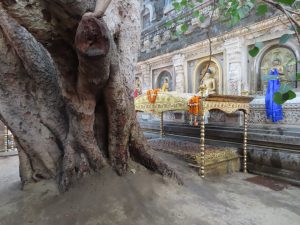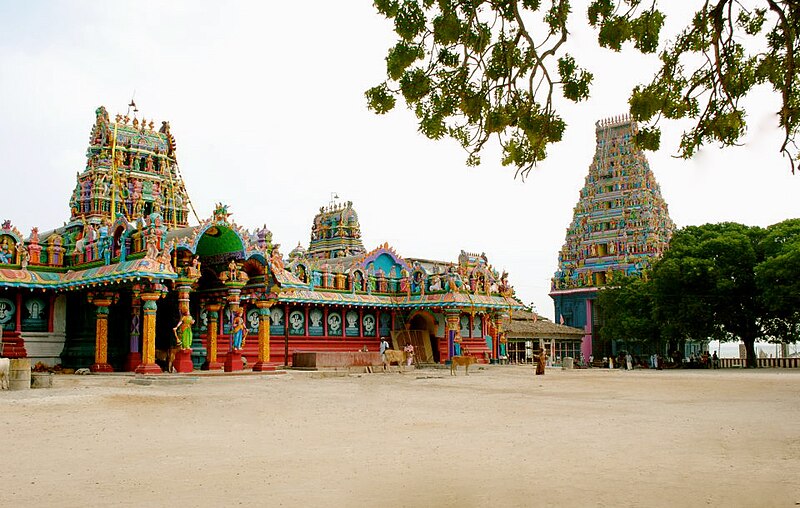OBBG0001 Bodhgayā stone slab with vajrāsana inscription

OBBG0001 Bodhgayā, Bihār. The so-called vajrāsana or diamond throne under the Bodhi tree at the Mahābodhi temple in Bodhgayā. Photograph by Daniela De Simone.
INBG0001 Bodhgaya vajrasana inscription on stone slab
Bodhgayā (बोधगया), Bihār. Inscription (INBG0001) on the narrow edges of the upper surface of a sandstone slab, the so-called vajrasāna (OBBG0001). Edition here that of Balogh in De Simone et al. (2020), see Concordance for bibliographic data.
PYU32 Myanadi Stone Slab Inscription
OB03182 Nainativu Inscribed Slab of Parakramabahu I
Nainativu Nagapooshani Amman Temple, Sri Lanka
IN03229 Nainativu Tamil Inscription of Parakramabahu I
This inscription is engraved on both sides of a stone slab, which was found lying opposite the entrance to the famous Nākapūṣaṇi-Ammaṉ Temple on the sacred island of Naiṉātīvu in the Jaffna district. Mudaliyar Rasanayagam made an eye-copy of the inscription and published the text as a footnote in his book Ancient Jaffna (1926: 208–209), although his reading was incomplete and contain several errors. Subsequently, the Archaeological Department prepared an estampage of the record in 1949, which Karthigesu Indrapala used to produce a more accurate text and translation in the University of Ceylon Review, 21, no. 1 (1963), pp. 63–70. Large portions of the original inscription have been lost. This is due to the fact that the lower portion of the slab has been broken off and built into the wall of the shrine. Furthermore, the first part of the inscription, written on the obverse of the slab, was obliterated by workmen sharpening their tools on their stone when it lay on the ground outside the temple. Only the text on the reverse side of the slab has survived. Fortunately, the preserved lines contain both the purpose of the edict and the name of the ruler who issued it, although it does not mention the regnal year or date. The record is written in Tamil except for the last two lines, which are in Sanskrit and state that the edict was issued by Deva Parākramabhuja, the emperor of all Siṁhala. The name Parākramabhuja is the Sanskrit equivalent of the Sinhalese Parākramabāhu and may refer to any of the Sinhalese rulers with this name. On palaeographic grounds, the inscription may be assigned to the twelfth or thirteenth century, hence the king question must be either Parākramabāhu I or II, since all the other rulers of that name reigned in significantly later periods. From the contents of the inscription, it can be inferred that the edict was issued by Parākramabāhu I, since the record contains trade regulations concerning wreckages off the port of Ūrāttuṟai (present-day Kayts). The fact that these regulations were proclaimed by the king himself indicates that he was in supreme control of the northernmost parts of the island. Parākramabāhu II did not enjoy such authority over the northern regions, while Parākramabāhu I had control over the entire island. Indeed, there is contemporary and reliable evidence that Ūrāttuṟai was an important naval and commercial centre in his time, plus he was well-known for his organisation of state trading with foreign countries.
OB03181 Mankanai Inscribed Slab of Gajabhahu II
IN03228 Mankanai Inscription of Gajabhahu II
This inscription is engraved on a stone slab, which was discovered in the village of Mānkanai in the Trincomalee town. The slab is now kept in the Archaeological Museum at Anuradhapura. The inscription is in two parts, each comprising of twenty-two lines of writing incised between parallel lines. The purpose of the record is to register the donation for life of certain paddy lanks to one Mintaṉ Koṟṟaṉ, the overseer of the palanquin bearers of the palace. The donation was made by king Gajabhāhu II (r. 1131–1153 A.D.) but it is dated in the forty-third regnal year of his predecessor Jayabhāhu I (r. 1108–1145/6 A.D.) and was inscribed on stone by a local ruler in the Southern Country called Māṉāparaṇa. The practice of dating an inscription from the coronation of a dead king is known from inscriptions. Since Jayabhāhu I took the throne in 1108, the present inscription may be dated to 1150–1151.
OB03180 Panduwasnuwara Slab of Niśśaṅka Malla
IN03227 Panduwasnuwara Tamil Slab Inscription of Niśśaṅka Malla
This inscription was discovered by the Archaeological Commissioner, Senarath Paranavitana, in 1951 at Paṇḍuvasnuvara, otherwise called Parākramapura, which was the capital of the Principality of Dakkhiṇa-deśa for a time during the medieval period. Paṇḍuvasnuvara is situated in the Girātalana Korale of the Devamädi Hatpattu in the Kurunǟgala District, some twenty-two miles from Chilaw on the Wariyapola road. The inscription is engraved on a stone slab, which was found at an ancient site to the south of the Citadel. Its discovery is mentioned in the Archaeological Survey of Ceylon Annual Report for 1951 (p. 6). The record is dated in the fifth year of the Kalinga ruler Niśśaṅka Malla, who is here given the biruda Parākramabāhu. Since this ruler ascended to the throne in 1187 A.D., the date of the inscription is to be placed in the year 1191 A.D. or 1192 A.D. This dating is confirmed by the astronomical data given in the inscription. On the basis of this data, the equivalent date of the record would be either Thursday 7 January 1188 or Thursday 3 January 1191, the second of which does indeed fall in the fifth year of Niśśaṅka Malla. The purpose of the inscription is to record the benevolent deeds of a military general called Matimāṉapañacara alias Kulaṉtey. This general can be identified with Lak Vijayasinha, who is mentioned in the slab inscriptions of Niśśaṅka Malla at Polonnaruva.

